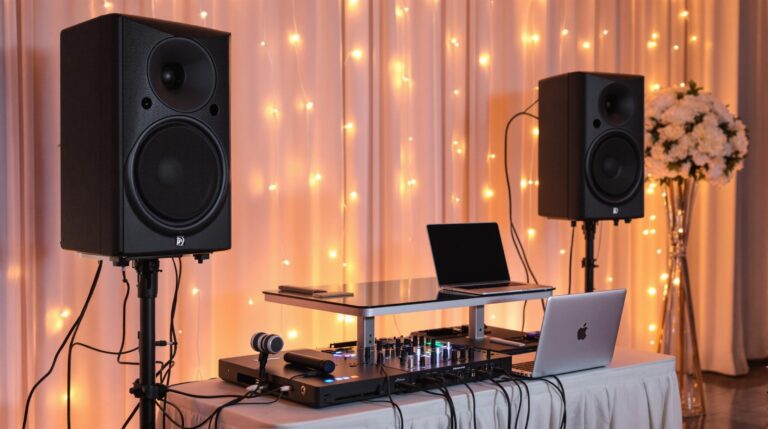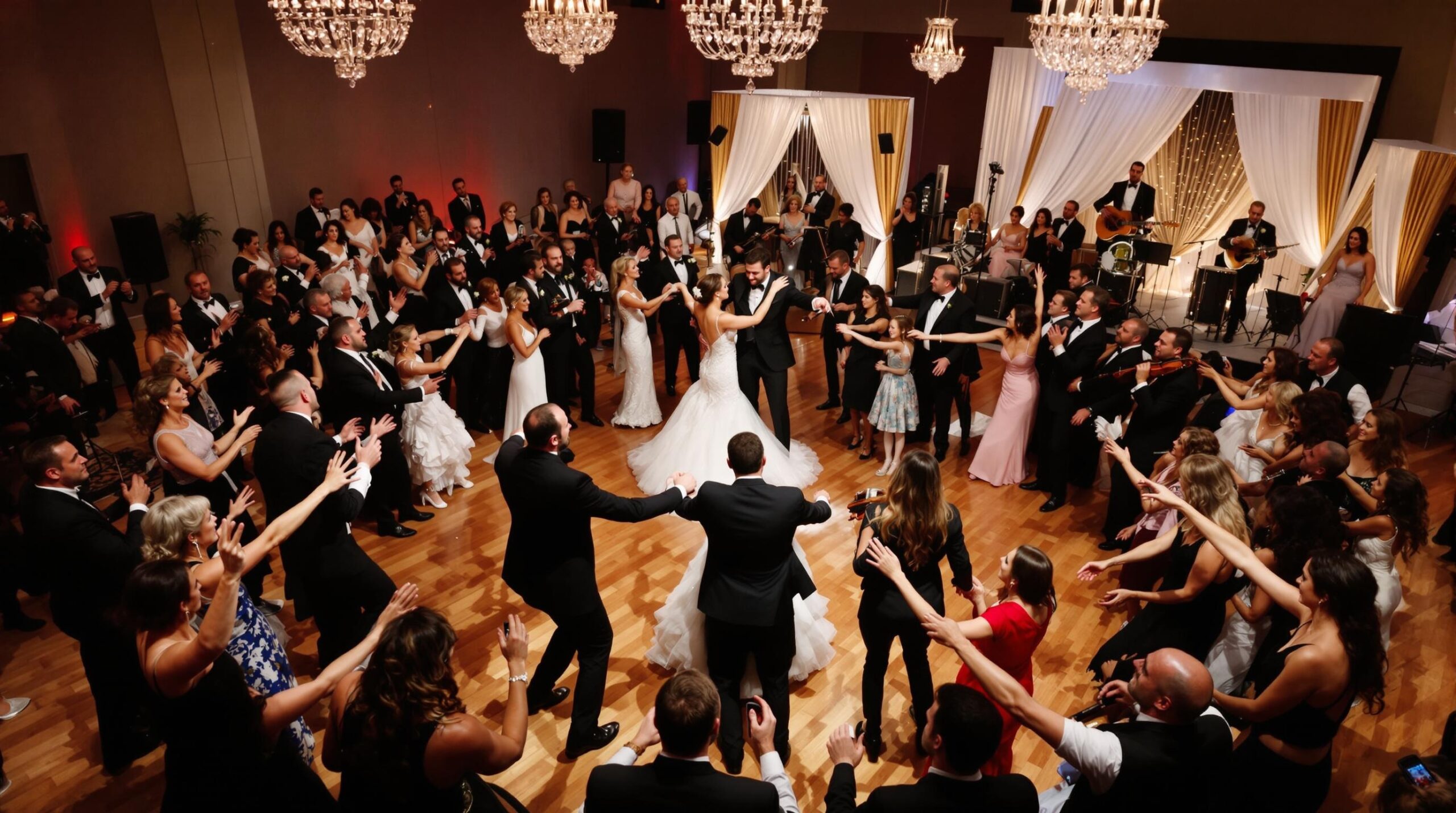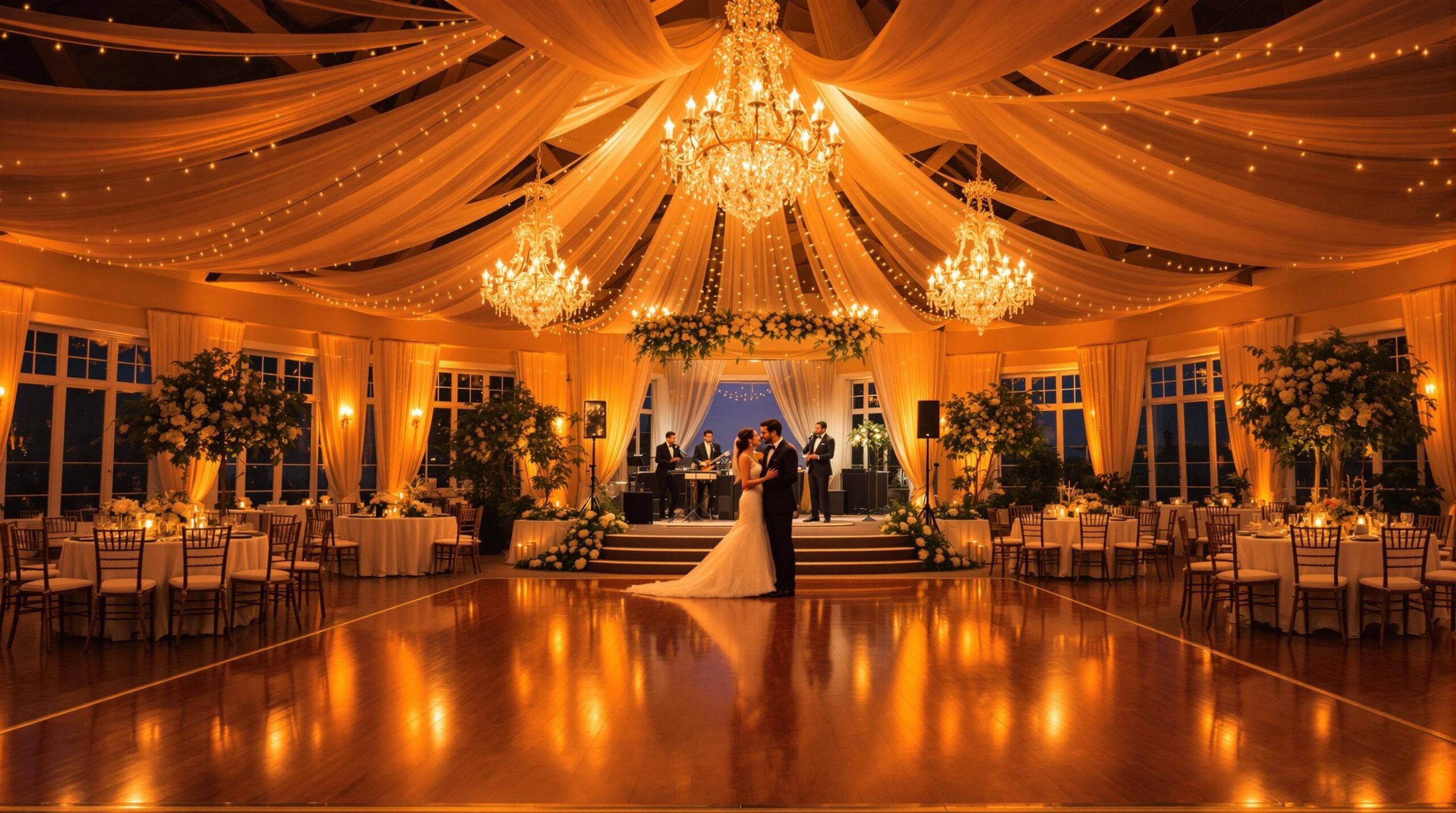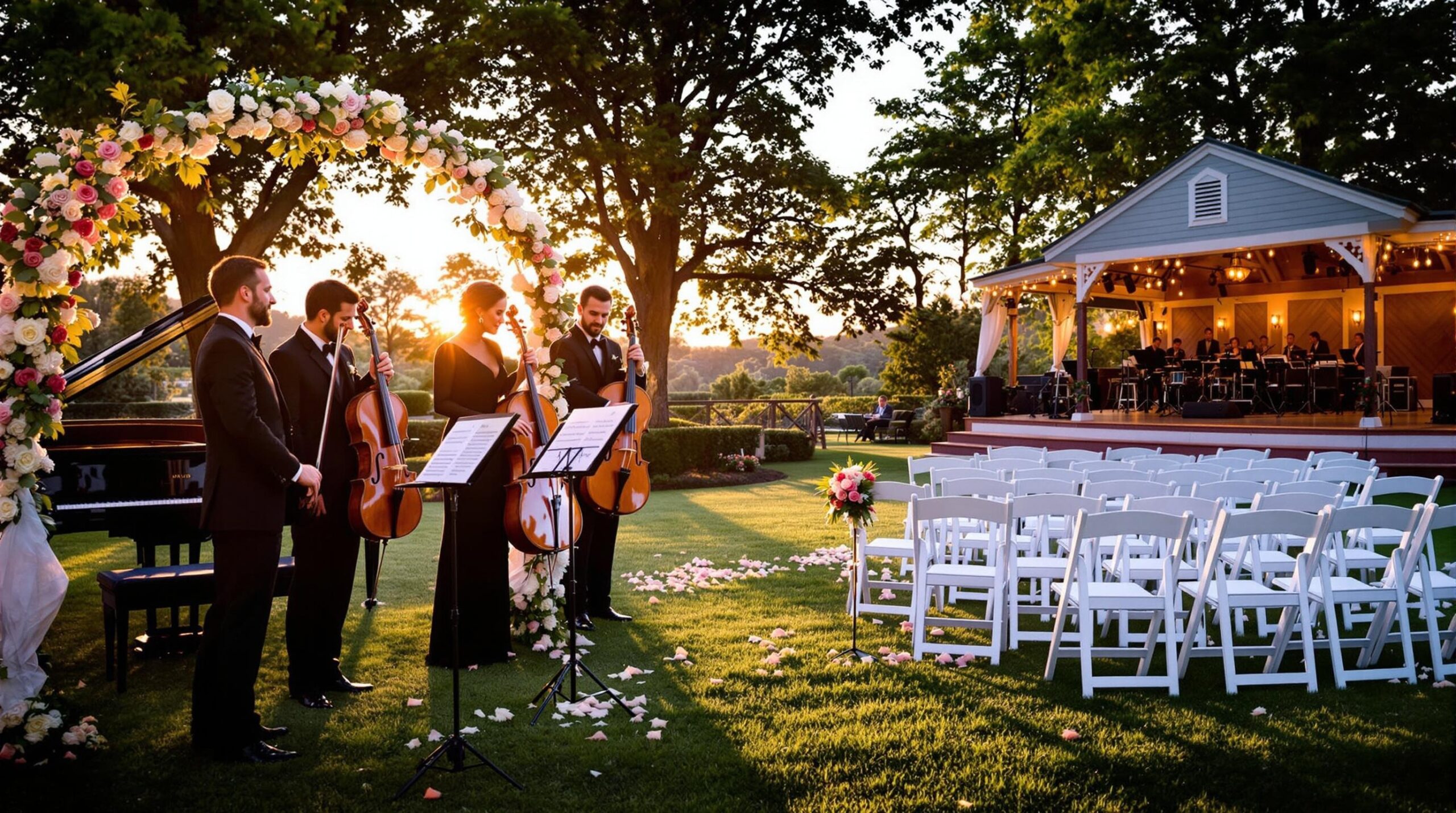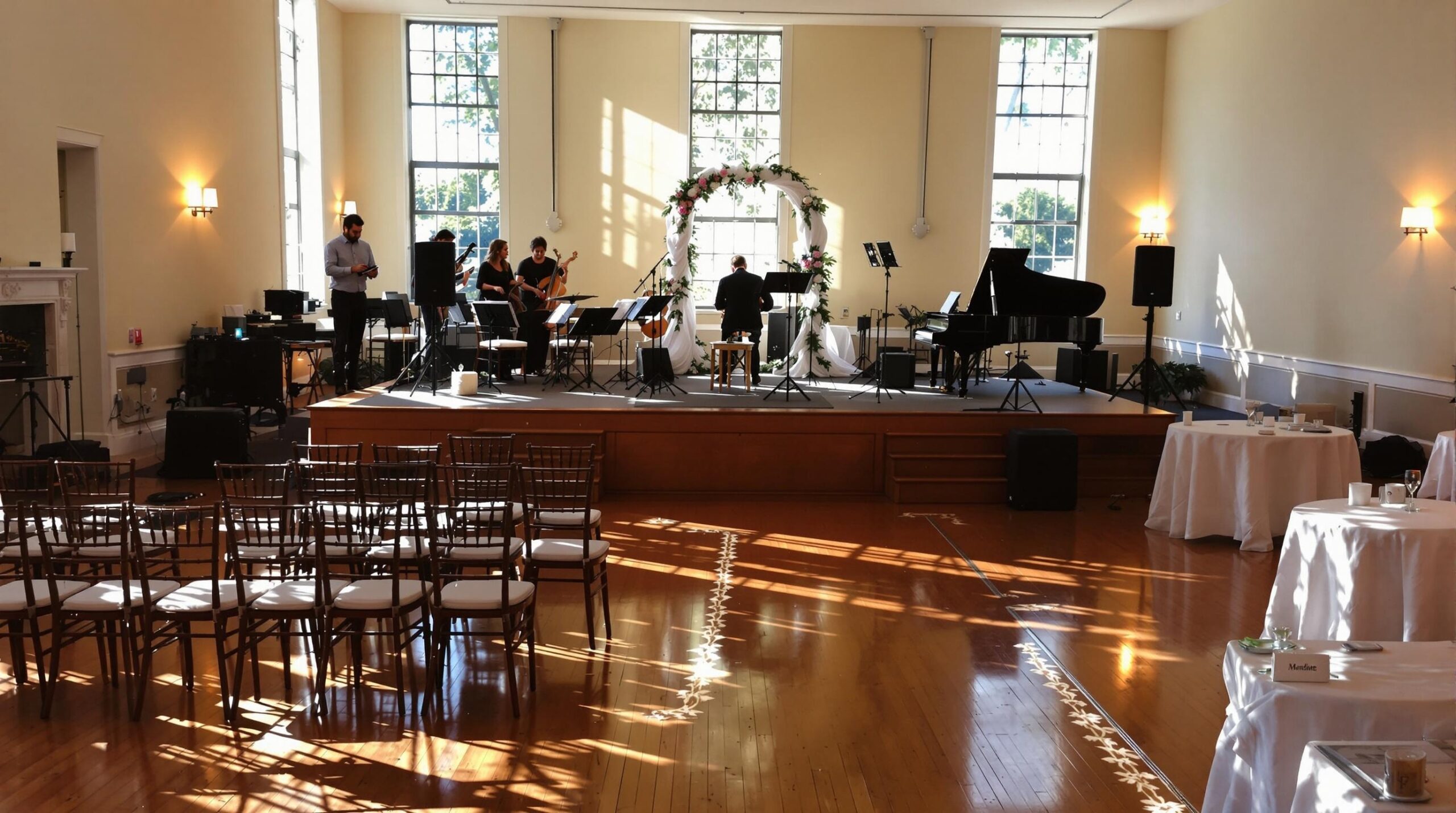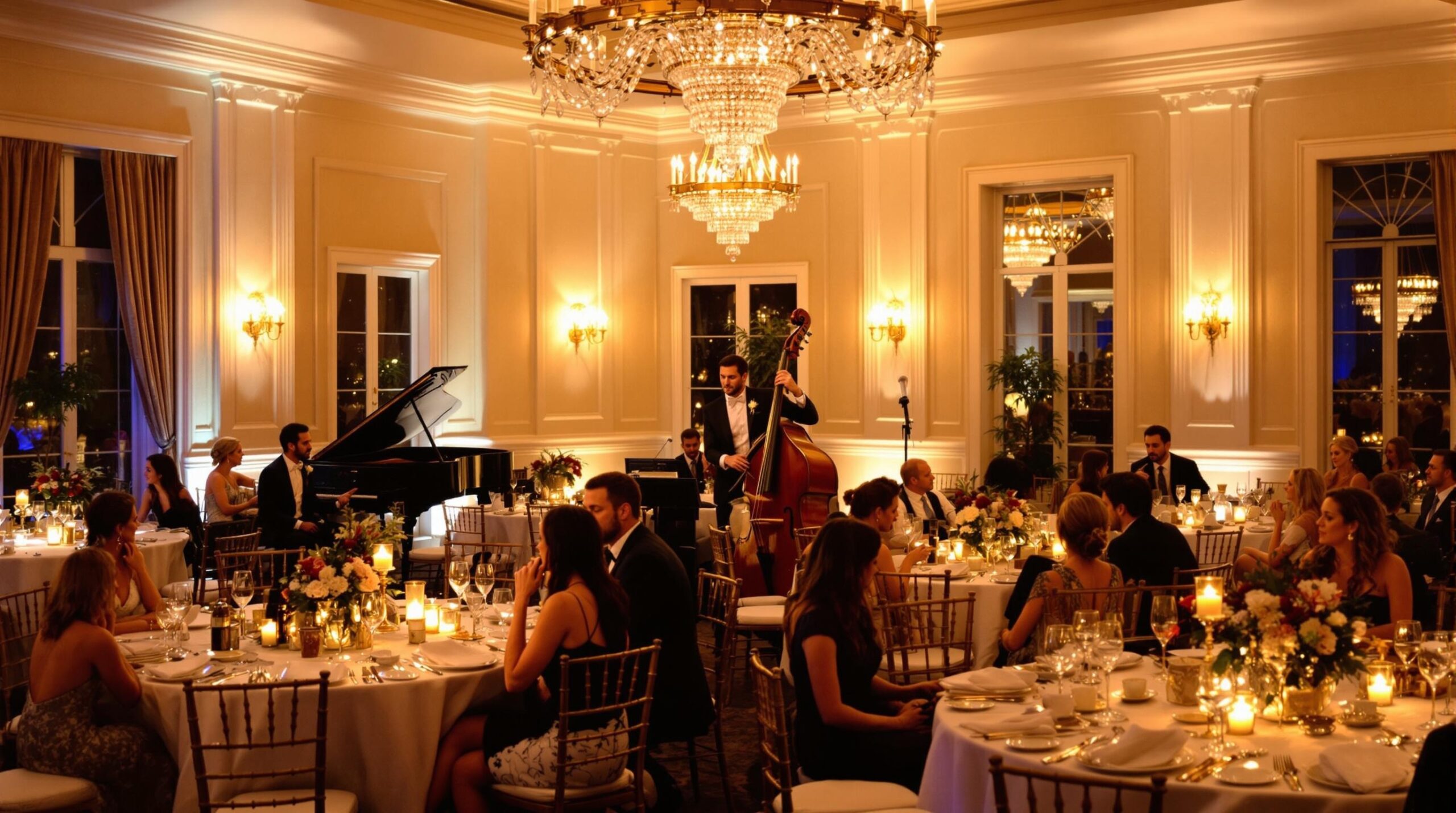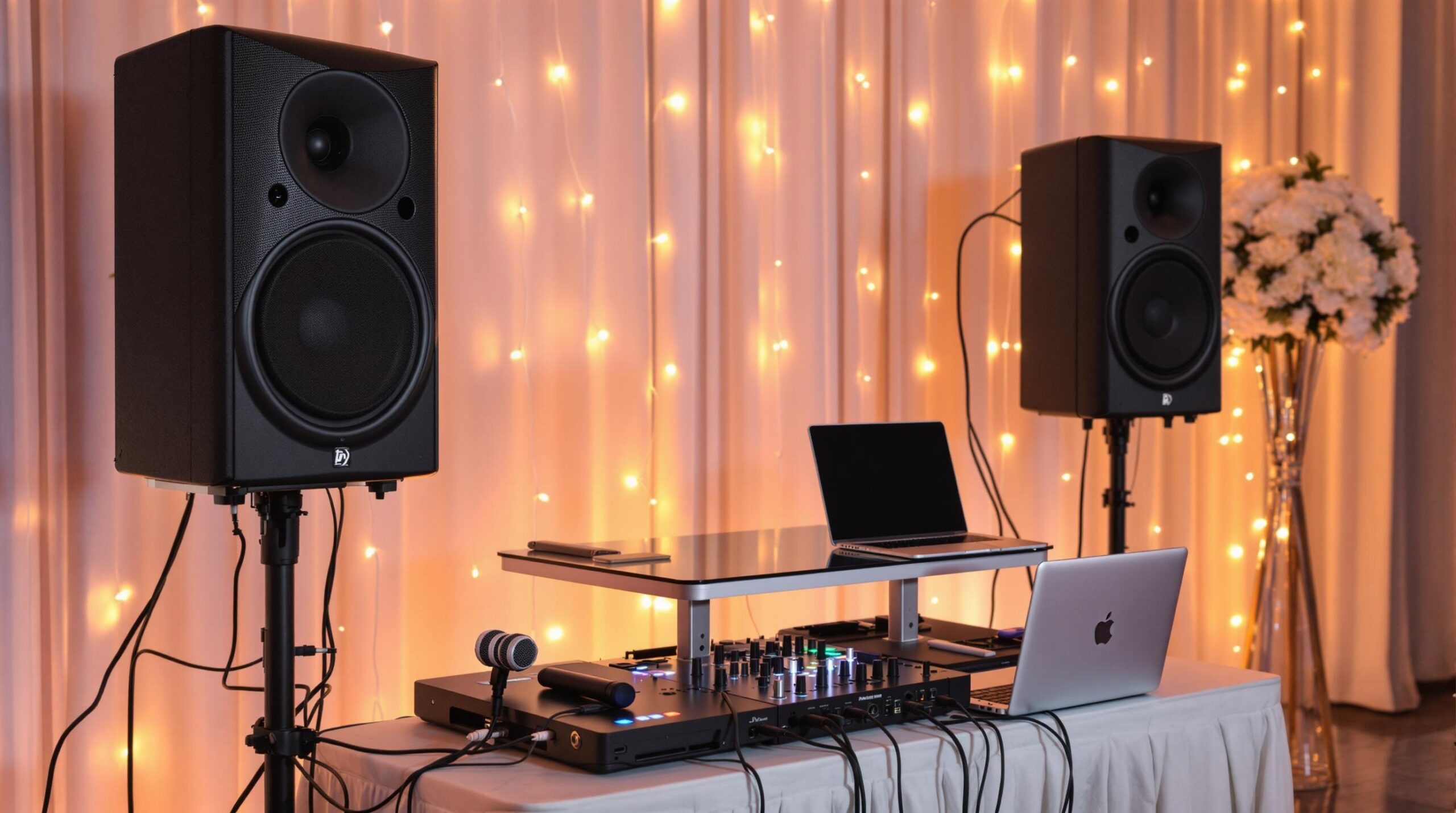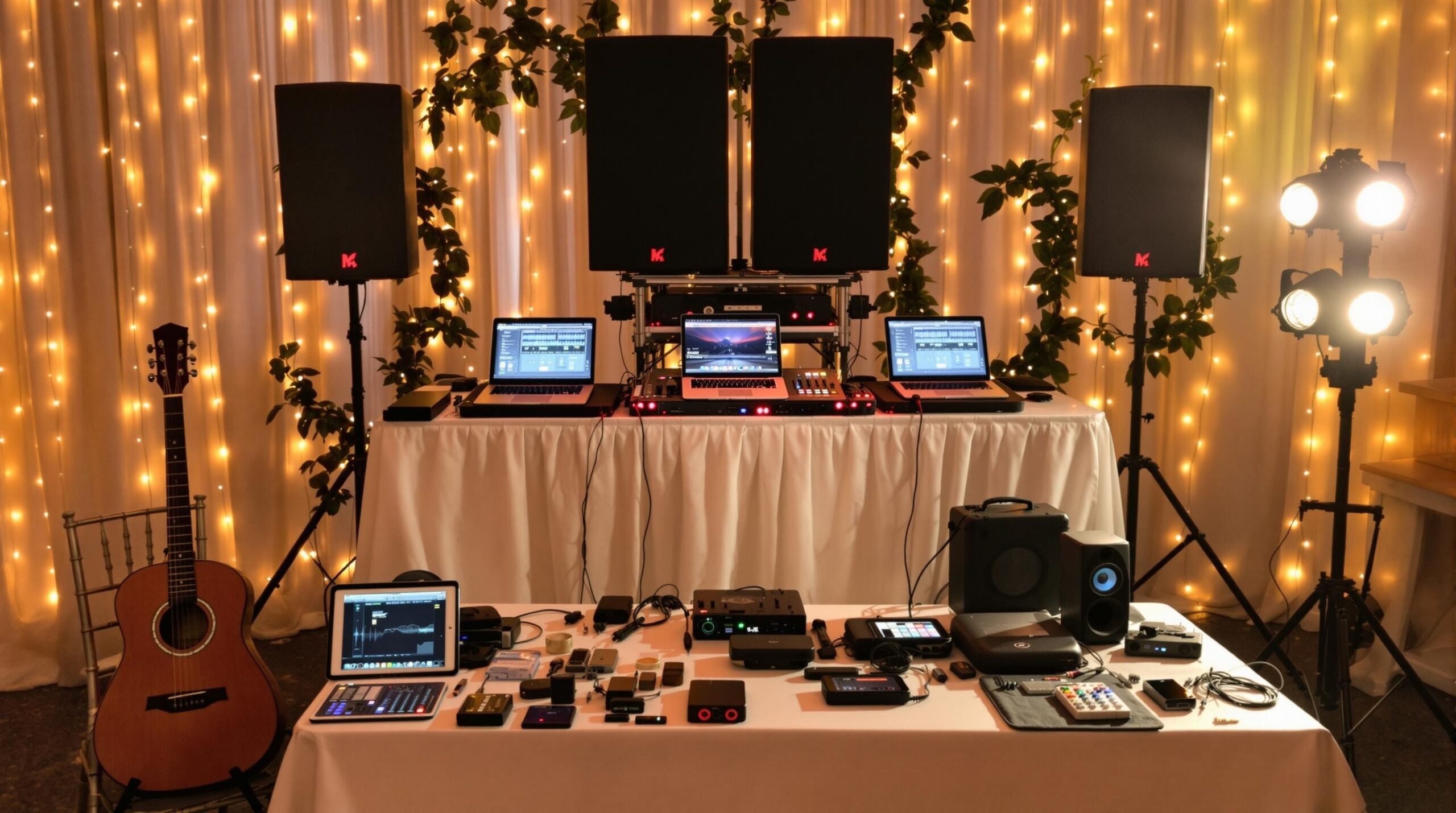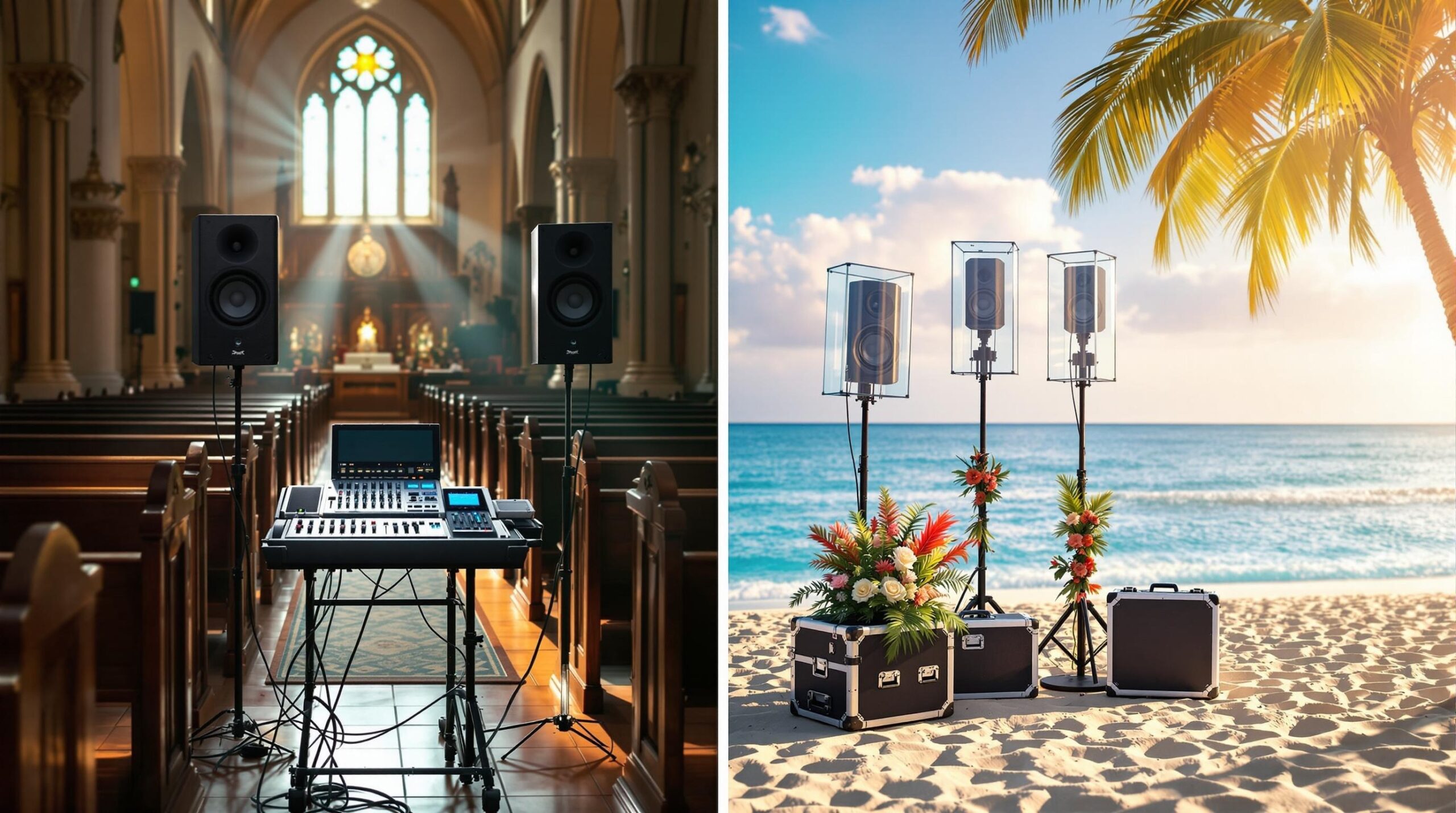Making smart music choices can save thousands on wedding entertainment costs while creating an unforgettable atmosphere. Planning your own wedding music requires careful preparation, equipment consideration, and strategic song selection.
Essential Equipment for DIY Wedding Music
A reliable sound system forms the backbone of DIY wedding music. The basic setup should include:
- Speakers – At least two powered PA speakers (12-15 inch recommended)
- Mixer – A small 4-8 channel mixer for multiple inputs
- Microphones – 1-2 wireless mics for announcements
- Music Source – Laptop or tablet with backup device
- Cables – Extra audio cables and power cords
Consider renting professional equipment instead of purchasing to save money while ensuring quality sound.
Creating the Perfect Song Timeline
Organize your playlist around key wedding moments for smooth transitions:
| Wedding Moment | Music Duration | Song Type |
|---|---|---|
| Pre-ceremony | 30 minutes | Soft instrumental |
| Ceremony | 20-30 minutes | Classical/Traditional |
| Cocktail Hour | 60 minutes | Jazz/Light Pop |
| Reception | 3-4 hours | Mix of genres |
Song Selection Strategies
Build your playlist with these proven approaches:
- Must-Play List – Core songs for key moments
- Do-Not-Play List – Songs to avoid
- Guest Requests – Collect beforehand via wedding website
- Genre Mix – 40% current hits, 40% classics, 20% specialty
Test your playlist transitions before the big day. Create backup playlists in case of technical issues.
Pro Tip: Always have a designated music coordinator who knows the timeline and can handle basic troubleshooting.
Managing Sound Levels and Equipment Setup
A well-balanced sound system ensures music reaches all guests without overwhelming conversations. Position speakers strategically and test volume levels during venue setup.
- Speaker Placement – Aim speakers at a 45-degree angle toward the dance floor
- Volume Control – Set different levels for dinner and dancing
- Sound Check – Test audio in an empty and full room
- Backup Power – Connect to separate circuits to prevent overload
Handling Music Transitions and Flow
Smooth song transitions keep the energy flowing throughout your celebration. Create music segments based on reception activities.
| Activity | Energy Level | Transition Tips |
|---|---|---|
| Dinner Service | Low-Medium | Fade between songs |
| First Dance | Medium | Clear announcement |
| Dance Floor | High | Beat-matched mixing |
Troubleshooting Common Issues
Prepare for potential technical challenges with backup solutions.
- Audio Dropouts – Keep offline music copies ready
- Equipment Failure – Have spare cables and power strips
- Timeline Changes – Create flexible playlist segments
- Volume Complaints – Designate a sound monitor
Final Music Planning Checklist
Complete these tasks one week before the wedding to ensure flawless execution.
- Equipment Test – Run full system check
- Backup Files – Save playlists on multiple devices
- Timeline Review – Share with all coordinators
- Sound Test – Check volumes in venue
- Battery Check – Fresh batteries for wireless equipment
- Contact List – Emergency numbers for rental companies
Pro Tip: Create an emergency kit with spare adapters, batteries, and basic tools for quick fixes.

